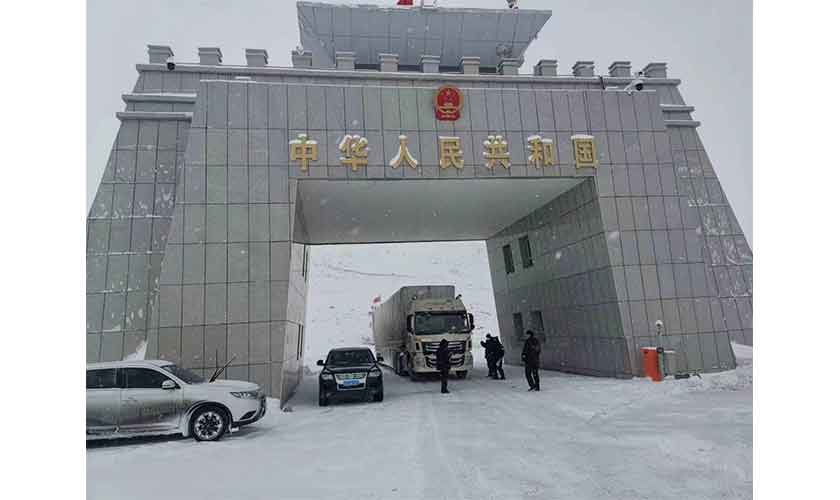everal China Pakistan Economic Corridor projects related to infrastructure, electricity, health, education, business and Gwadar port have been completed. Some more are in various stages of completion.
The CPEC is following its charted trajectory and seems to be well on its course. Both Pakistan and China are meant to benefit from this mammoth initiative. However, it appears that the CPEC has not been acknowledged as the great project it is by Pakistanis in general and the youth in particular.
Obviously, the populace has to be brought on board for the success of the historic initiative billed as a game changer.
The list of development projects to be completed under the CPEC banner has been lengthening. When the corridor was first conceived a $46 billion investment was committed by China. The amount was later raised to more than $60 billion. So far, around $30 billion has been spent on the completed projects and those currently under way. In the energy sector, projects generating 8,620 MW of electricity have been completed.
809 kilometres of road networks have been added to the national highways and motorways. After more than 1,700 kilometres are added to this, connectivity across the country will be achieved. Four special economic zones located at Rashakai, Dhabeji, Faisalabad and Bostan, are in different phases of completion.
Operationalisation of the Gwadar Port and its free zones, dredging of the port, construction of East Bay Express Way, New Gwadar International Airport, Pak-China Friendship Hospital and Pak-China Vocational Training Institute are set to catalyse socio-economic uplift in the area.
Projects related to poverty alleviation, such as vocational training, provision of technical laboratories, equipment and tools for agriculture, renovation of schools, smart classroom systems, distribution of solar-power lighting systems and basic health facilities have also been undertaken.
Despite all this, broad public support for the CPEC is wanting. A plausible explanation is to be found in the absence of trickle-down of the CPEC benefits to the general public. The CPEC has been projected as a game changer not only for China but also Pakistan. Expectations from the project may have been higher than realistic.
While the CPEC progress on macro level has been impressive, its appeal at micro level has been underwhelming.
Pakistan has a prominent youth bulge. Sixty percent of the population is young. The youth have vigour, vision and eagerness to move forward. They need opportunities. The CPEC should provide them the opportunity to bring prosperity to Pakistan.
It is never too late for course correction. Suitable communication can still help allay people’s fears besides affording them the opportunities to reap the benefits of this grand enterprise. Pakistan has a huge youth bulge. Sixty percent of the population is young. The youth have vigour, vision and eagerness to move forward. They need opportunities. The CPEC should provide them the opportunity to bring prosperity to Pakistan. There is a need to devise a broad based strategy to reach out to the youth at the grassroots level. There should be regular feedback on the performance of the CPEC projects.
Small and Medium Enterprise, as well as the cottage industry, merits due focus. The CPEC projects will require many tertiary facilities that may not be economical to establish for the government. The private sector can benefit from the situation. The CPEC is going to bring private capital from China. There is a need for public-private partnership on the Pakistani side as well. Many of the projects to be completed on the Pakistani side can be more cost-effective with private sector participation.
There is a dire need to pay attention to the education sector. A large number of students are prepared and willing to join for the projects associated with the CPEC. This is all the more important in areas like Gwadar.
Gwadar is a fishermen’s city. This attribute distinguishes it from the rest of the regions where CPEC projects are being developed. It merits special consideration. The academia-industry handshake needs early facilitation.
The academia must be apprised of the manpower requirements over the coming years. They must work for the preparation of future generations to meet the challenges they will face.
China is moving fast in cyber technology development. To work in consort with them, there is a need to keep up with their pace. Only academia working in tandem with the industry can provide the solution.
There is a great need to work in the information domain. People, especially in Balochistan, need to be engaged and assured that they are being treated fairly and will not be discriminated against.
People in the regions with significant CPEC projects have to be consistently engaged in order to make them aware of the realistic picture of efforts that the government is making for their welfare. It needs to be understood that while the CPEC will boost Pakistan’s economy, it will not solve all our problems.
The writer is a communication strategist at the Institute of Regional Studies. She can be reached at [email protected]
https://www.thenews.com.pk/tns/detail/1095105-a-true-game-changer


